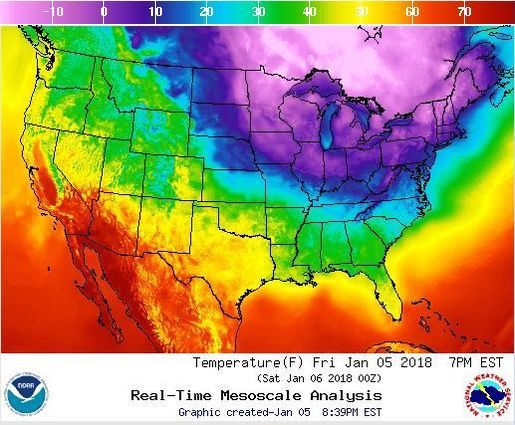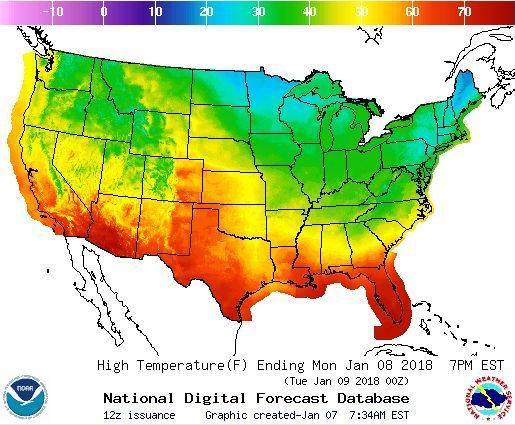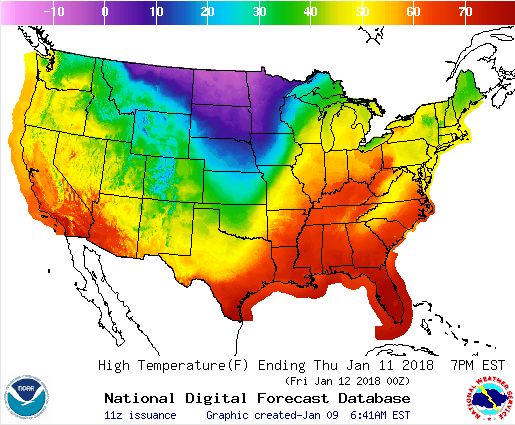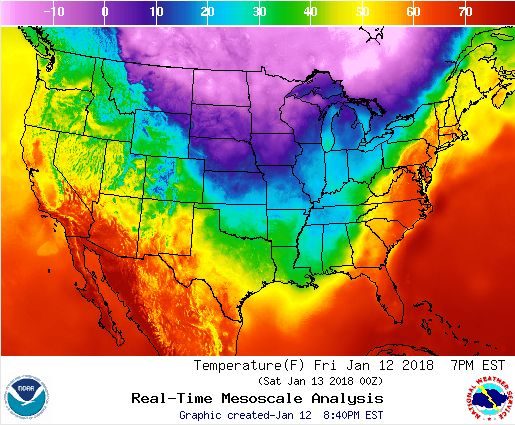Egads, it was cold last weekend! Here in Pittsburgh it was -6 to 11 degrees F, but yesterday things turned around. Sunday (7 Jan.) started at -6oF but warmed to a high of 30. Today will be above freezing and by Thursday the high will be 64oF. That’s a swing of 70 degrees in only four days!
The slideshow above shows this in color for January 5, 8, 11 and 12.
I’m not complaining that we’re out of the deep freeze but … this weather is really odd. Why did it get so cold and why is it warming so fast? Why don’t we have a moderate winter like we used to?
Crazy as it sounds, it’s because the arctic is warming faster than the rest of us. When there’s not a big temperature difference between the North Pole and the mid-latitudes (us) the jetstream slows down. When it’s sluggish, it wobbles in high amplitude loops that dip as far south as Florida(*).
The video below explains why. I recommend watching it twice; you see more the second time. (My end notes have info on millibars, etc.)
So when a cold loop settles over us, we’re really cold and when it moves on we’re really hot. It happens quickly in both directions.
Don’t put away your winter clothes on Thursday. The forecast says it’ll be 5 degrees on Saturday night.
(temperature forecast maps from NOAA; Jet stream explanation by Jennifer Francis on YouTube)
Definitions and notes:
- A millibar (or mb) is a unit of air pressure.
- The average air pressure at sea level is 1013.25 millibars = 14.7 pounds.
- What’s the significance of 500 millibars? The 500 millibar pressure zone is where air pressure is half what it was at sea level, halfway up in the atmosphere. Since air pressure varies as weather systems move above us, the 500mb map is a great diagram of what the weather systems are doing. Here’s the air pressure map for Friday 5 Jan 2018 at 1200z (8am). Notice that the pressure lines echo Friday’s temperature map above.
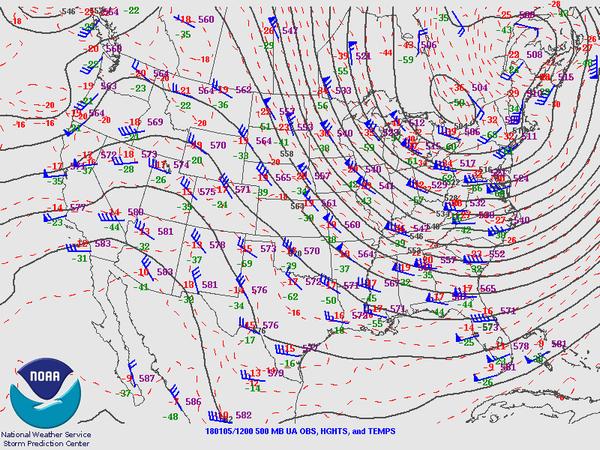
- (*) I wrote above that the jetstream dips as far south as Florida. Well, it dips even further than that. In June 2016 the northern jetstream crossed the equator and joined the southern one!
